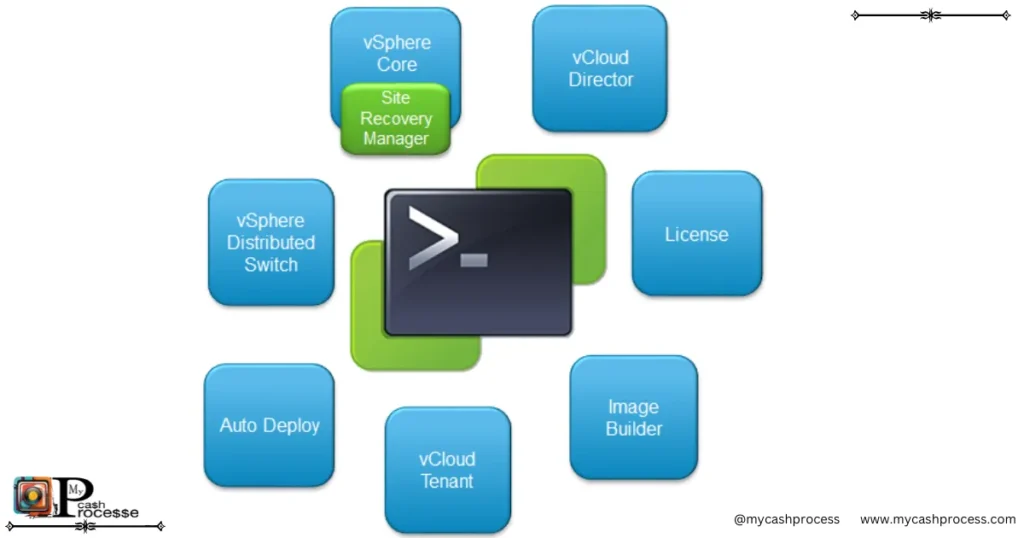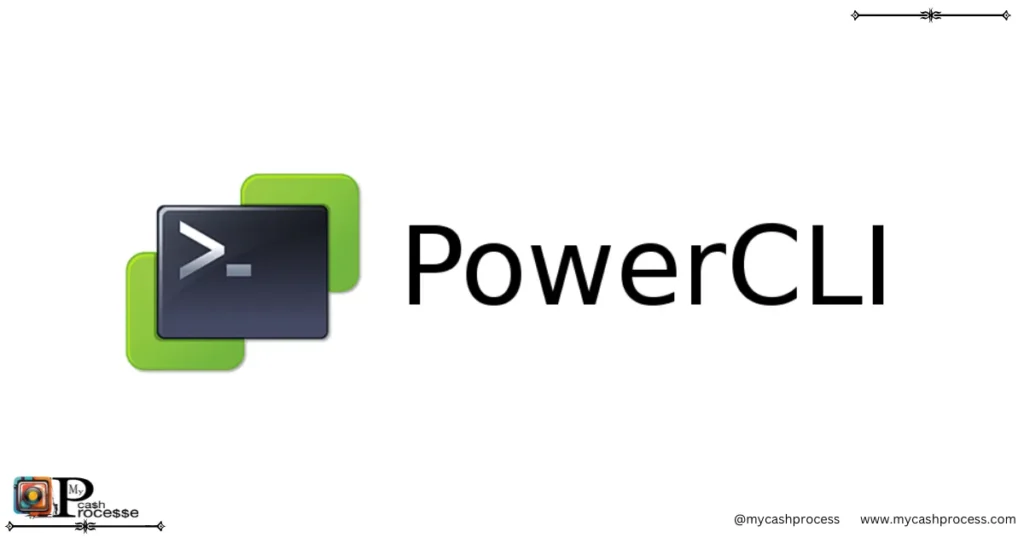PowerCLI Fundamentals: Essential Tool for Host Management
PowerCLI is a powerful command-line interface and automation tool developed by VMware. It simplifies and accelerates the process of managing VMware environments, especially when dealing with large-scale infrastructure. For VMware administrators, storage administrators, and IT professionals, mastering PowerCLI is essential for automating repetitive tasks, managing virtual machines, and querying host and storage configurations.
In this section, we’ll explore the key concepts and commands that will set the foundation for your journey to effectively get a list of hosts on a specific lun powercli.
Quick Access Guide
What is PowerCLI and Why is It Important?
PowerCLI is a set of PowerShell modules that allows IT professionals to automate VMware management tasks. By leveraging PowerCLI, you can interact with your VMware vSphere environment, automate complex workflows, and query various objects like hosts, datastores, virtual machines, and networks. Get a list of hosts on a specific lun powercli is one of the most valuable tasks PowerCLI can help automate in a VMware environment.
The Basics of PowerCLI Syntax
PowerCLI uses PowerShell syntax, making it a familiar tool for those already versed in scripting. Commands typically follow the “Verb-Noun” structure. For example, to retrieve information about hosts, you would use a command like Get-VMHost. This structure applies to all queries, including those related to storage, where you would use commands such as Get-Datastore.
Key PowerCLI Commands for Host and Storage Management
For managing hosts and storage in VMware, a few essential PowerCLI commands are crucial. Here are some key commands to get started:
Get-VMHost: Lists all ESXi hosts in the vSphere environment.Get-Datastore: Retrieves information about datastores, including LUNs.Get-ScsiLun: Helps to query LUNs attached to ESXi hosts.Get-VM: Retrieves virtual machine information.
For the purpose of getting a list of hosts on a specific LUN, you’ll primarily work with Get-VMHost and Get-ScsiLun.
Why PowerCLI is the Go-To Tool for Automation
PowerCLI is essential for administrators who need to manage large environments efficiently. By automating tasks like getting a list of hosts on a specific lun powercli, you can reduce manual errors, improve efficiency, and save time. Additionally, PowerCLI scripts can be scheduled to run at regular intervals, ensuring that host and storage information is always up to date.
Benefits of Using PowerCLI Over Other Tools
While there are other tools available for managing VMware environments, PowerCLI offers several advantages:
- Flexibility: PowerCLI can handle nearly every aspect of VMware management.
- Automation: Repetitive tasks can be automated to reduce manual effort.
- Integration: PowerCLI integrates seamlessly with other systems and tools, enabling broader automation.
Pre-Execution Setup for PowerCLI Commands in VMware
Before running commands to get a list of hosts on a specific lun powercli, it’s essential to set up PowerCLI and ensure that your environment is configured correctly. Proper setup can save time and reduce the chances of encountering errors later in the process.
Installing PowerCLI
The first step is to install PowerCLI. The easiest method is through the PowerShell Gallery. Simply run:
Install-Module -Name VMware.PowerCLI -Force
This will install the latest version of PowerCLI on your machine. Make sure you have administrative privileges before running the command.
Configuring VMware vCenter and ESXi Hosts
Once PowerCLI is installed, you need to establish a connection to the vCenter server and ESXi hosts. Use the following command to connect to your vCenter:
Connect-VIServer -Server your-vcenter-server
Ensure that the credentials you provide have sufficient privileges to access host and datastore information.
Setting Up PowerCLI Profiles for Multiple vCenters
If your environment contains multiple vCenters, you can configure connection profiles to avoid having to manually enter credentials every time. Use the New-VIConnection cmdlet to set up profiles for each vCenter. You can store credentials securely with the -Credential parameter.
Ensuring Proper Permissions for Running PowerCLI Commands
To successfully run commands like get a list of hosts on a specific lun powercli, your user account must have the necessary privileges. Ensure that your account has the following permissions:
- Host management rights
- Datastore access rights
- Full permissions to the vCenter server
Troubleshooting Connection Issues
Sometimes, connection issues arise when PowerCLI cannot reach the vCenter or ESXi hosts. Make sure that the following conditions are met:
- The vCenter server and ESXi hosts are reachable from your workstation.
- Firewall rules allow PowerCLI traffic.
- The vCenter services are running and accessible.
Running the Command to Get a List of Hosts on a Specific LUN PowerCLI
Now that your environment is configured, it’s time to run the command to get a list of hosts on a specific lun powercli. This section walks you through the steps for executing the necessary command, and how to filter the results based on your needs.
Using the Get-ScsiLun Command
To retrieve information about LUNs and the hosts that are connected to them, you will need to use the Get-ScsiLun cmdlet. This command allows you to view the LUNs associated with your ESXi hosts and filter the results based on LUN ID, name, or type.
Example command:
Get-ScsiLun -LunType "RawDevice" | Where-Object {$_.CanonicalName -like "*LUN_Name*"}
This command returns a list of hosts associated with a specific LUN.
Filtering Results Based on Host and LUN Attributes
To refine your results, you can use the Where-Object cmdlet to filter based on specific attributes such as LUN name or host properties. This helps you narrow down the list of hosts to only those relevant to your task.
Exporting the Results for Reporting
Once you have retrieved the list of hosts, you may want to export the data to a file for reporting or further analysis. Use the Export-Csv cmdlet to save the results to a CSV file:
Get-ScsiLun -LunType "RawDevice" | Export-Csv -Path "C:\Host_LUN_Report.csv"
Handling Multiple LUNs and Hosts
If you have multiple LUNs and need to query several at once, you can iterate through a list of LUNs using a loop in your script. This ensures you get a comprehensive list of hosts across your environment.
Example script:
$LUNs = Get-ScsiLun
foreach ($LUN in $LUNs) {
Get-VMHost | Where-Object { $_.ScsiLun.CanonicalName -eq $LUN.CanonicalName }
}
Verifying the Output
Once the command is executed, verify that the list of hosts is accurate. If the output is empty or incorrect, check for common issues like incorrect LUN names or disconnected hosts.
Extracting Host Names from vCenter: Get a List of Only Hosts Names on a vCenter
When working with VMware environments, you may only need a list of host names from your vCenter for easier management or reporting. PowerCLI provides an efficient way to get a list of only hosts names on a vcenter.
Using the Get-VMHost Command
To retrieve host names, the Get-VMHost cmdlet is used. This command queries all ESXi hosts in the connected vCenter and retrieves detailed host information, including host names.
Example command:
Get-VMHost | Select-Object Name
Filtering Host Names for Specific Hosts
If you need to extract names of specific hosts (such as those attached to certain LUNs), use the Where-Object cmdlet:
Get-VMHost | Where-Object { $_.Name -like "*HostName*" } | Select-Object Name
Exporting Host Names to a CSV File
You can also export the list of host names to a CSV file for reporting or integration purposes:
Get-VMHost | Select-Object Name | Export-Csv -Path "C:\VMHost_Names.csv"
Automating Host Name Extraction
For ongoing operations, you may want to automate the extraction of host names at regular intervals. PowerCLI scripts can be scheduled using Task Scheduler in Windows or cron jobs in Linux environments.
Best Practices for Managing Host Names
When extracting host names, ensure that you are using consistent naming conventions. This makes it easier to manage hosts across multiple vCenters and ESXi hosts.

Common Errors and Troubleshooting in PowerCLI for Host Management
As with any automation tool, PowerCLI may encounter issues when running commands. In this section, we’ll cover common errors and troubleshooting tips for administrators.
Common Errors When Running Get a List of Hosts on a Specific LUN PowerCLI
One common error is when PowerCLI cannot connect to the vCenter or ESXi hosts due to network issues or authentication failures. Another issue may be related to incorrect LUN identifiers or inaccessible storage devices.
Authentication Issues
If you’re unable to authenticate with vCenter or ESXi hosts, verify that your credentials are correct and that you have the necessary permissions to execute commands.
Network Connectivity Problems
Check the network connections between your workstation and the vCenter server or ESXi hosts. Ensure that firewalls or security software are not blocking PowerCLI commands.
Incorrect LUN Names
Ensure that LUN names are entered correctly in the commands. Incorrect LUN identifiers are a common cause of errors when trying to get a list of hosts on a specific lun powercli.
Output Formatting Issues
Sometimes, the output may not be formatted correctly, which can make it difficult to read or export. PowerCLI provides several cmdlets for formatting the output, such as Format-Table, Format-List, and Select-Object.
How to Linux Get a List of Hosts Up on Network in PowerCLI
In environments where Linux hosts are part of the infrastructure, PowerCLI can also be used to linux get a list of hosts up on network.
Using PowerCLI to Query Linux Hosts
PowerCLI can interact with both VMware environments and Linux systems through SSH connections. You can use PowerCLI’s Invoke-VMScript cmdlet to run commands on Linux hosts.
Automating Network Checks for Linux Hosts
If you need to regularly check the status of Linux hosts on the network, use PowerCLI scripts combined with Linux networking tools like ping or netstat to automate the checks.
Example Script for Checking Host Availability
Invoke-VMScript -VM "LinuxVM" -ScriptText "ping -c 4 192.168.1.1"
Reporting Network Status of Linux Hosts
Once you have the network status, you can export the results to a CSV file for later analysis or reporting.
Addressing Complex Network Issues: Arch Host and No Internet on Guest
Network issues like arch host and no internet on guest can be particularly tricky to resolve. This section will cover how to use PowerCLI to address such problems.
Diagnosing Network Connectivity Issues
Start by checking the network configuration on the guest VM. Use PowerCLI to retrieve information about the VM’s network adapter and verify that it is connected to the correct virtual network.
Resolving IP Configuration Problems
If the guest VM is not receiving an IP address, use PowerCLI to reset the network adapter or manually assign an IP address.
Firewall Configuration and DNS Resolution
Sometimes, network isolation is caused by misconfigured firewalls or DNS settings. Use PowerCLI to troubleshoot and configure firewall rules or DNS servers on the guest VM.
Automating Network Checks for Guest VMs
Automate network troubleshooting by setting up regular checks to ensure that all VMs, including guests with network issues, are operational.
Automating and Scheduling PowerCLI Scripts for Hosts and Storage Management
PowerCLI’s true potential lies in its ability to automate repetitive tasks. By scheduling scripts, you can ensure that your environment is constantly monitored for issues such as getting a list of hosts on a specific lun powercli.
Using Task Scheduler for PowerCLI Scripts
PowerCLI scripts can be scheduled to run at regular intervals using Windows Task Scheduler. This is ideal for periodic checks on hosts and storage systems.
Integrating with Other Automation Tools
PowerCLI can be integrated with other automation platforms, such as Ansible, Jenkins, or Puppet, to enhance automation workflows and streamline management.
Best Practices for Automating PowerCLI Scripts
When automating PowerCLI scripts, ensure that you include proper error handling and logging to avoid interruptions in the process.
Utilizing PowerCLI for Cross-Cluster Host and LUN Management
Managing hosts and storage across multiple clusters within a vSphere environment is crucial for large VMware infrastructures. PowerCLI enables administrators to get a list of hosts on a specific lun powercli from different clusters within the same vCenter server. This section focuses on how to efficiently manage LUNs and hosts across multiple clusters, ensuring streamlined storage and resource utilization.
Querying Hosts Across Multiple Clusters
In environments with several clusters, querying all hosts across these clusters is essential to maintain visibility. PowerCLI’s Get-VMHost cmdlet can be modified to query hosts from different clusters.
Example:
powershellCopy codeGet-VMHost -Location "Cluster1","Cluster2" | Get-ScsiLun
This command allows you to get a list of hosts on a specific lun powercli across multiple clusters, making it easier to manage your LUNs and hosts across different locations in your VMware environment.
Managing LUNs for Multi-Cluster Environments
In a multi-cluster setup, LUNs might be shared across different clusters, and it’s vital to manage them properly. Using PowerCLI, you can get a list of hosts on a specific lun powercli and identify which clusters are utilizing which LUNs, making it easier to plan for storage and avoid performance bottlenecks.
Ensuring Consistent Storage Access Across Clusters
Once you’ve retrieved the list of hosts on specific LUNs, it’s important to ensure that all the necessary clusters and hosts have consistent access to the required storage. PowerCLI helps identify any discrepancies in storage access, allowing administrators to take corrective actions.
Automating Multi-Cluster Host and LUN Management
Automating the management of hosts and LUNs across clusters can significantly reduce administrative overhead. By scheduling PowerCLI scripts, administrators can get a list of hosts on a specific lun powercli across all clusters at regular intervals, ensuring that storage and host configurations are always up to date.
Monitoring Performance and Utilization Across Clusters
PowerCLI can also be used to retrieve performance metrics for hosts and LUNs across multiple clusters. By leveraging performance data, administrators can optimize their storage and host management processes and identify any underutilized or overloaded resources.
Enhancing Host and Storage Security with PowerCLI
Security is a critical aspect of managing hosts and storage in any IT environment. PowerCLI can help administrators enhance the security of their VMware infrastructure by getting a list of hosts on a specific lun powercli and identifying potential vulnerabilities. This section will cover how PowerCLI can be used to increase the security of your VMware environment by managing host configurations and storage access.
Identifying Hosts with Outdated Security Configurations
One of the most common security risks in VMware environments is running hosts with outdated security configurations. By using PowerCLI, you can get a list of hosts on a specific lun powercli, and assess their security settings, ensuring that all hosts comply with the latest security patches and best practices.
Auditing Storage Access and Permissions
To enhance security, PowerCLI can be used to audit who has access to specific LUNs. By reviewing LUN permissions, you can identify potential security gaps and ensure that only authorized hosts and users have access to sensitive data.
Example command:
powershellCopy codeGet-ScsiLun | Select-Object CanonicalName, @{Name="Host";Expression={$_.VMHost.Name}} | Export-Csv -Path "LUN_Access_Audit.csv"
This command will help get a list of hosts on a specific lun powercli and generate an access audit for LUNs in your environment, ensuring compliance with security protocols.
Ensuring Compliance with Storage and Host Security Policies
To ensure that your VMware hosts and storage comply with internal security policies, you can use PowerCLI scripts to regularly get a list of hosts on a specific lun powercli and check that all configurations align with security policies.
Automating Security Checks for Hosts and Storage
By automating security checks, administrators can ensure continuous compliance without manually running queries. PowerCLI scripts can be scheduled to run at predefined intervals, allowing you to get a list of hosts on a specific lun powercli and identify any changes in host or storage security settings over time.
Responding to Security Threats in Real Time
In the event of a potential security threat, such as unauthorized access to a LUN, PowerCLI can be used to quickly identify affected hosts. By querying LUNs and hosts using the get a list of hosts on a specific lun powercli command, you can take immediate action to mitigate risks and protect your VMware infrastructure.
Follow us on Pinterest, Twitter X, Facebook, Instagram, Quora, TikTok, Discord, YouTube, and WhatsApp Channel.
FAQs
What is the PowerCLI command to get a list of hosts on a specific LUN?
Use the Get-ScsiLun cmdlet to get a list of hosts on a specific lun powercli and filter based on LUN attributes.
How can I extract only the host names from vCenter using PowerCLI?
To get a list of only hosts names on a vcenter, you can use the Get-VMHost cmdlet and select the Name property.
Can I use PowerCLI to check the status of Linux hosts?
Yes, you can linux get a list of hosts up on network by utilizing PowerCLI’s ability to interact with Linux systems through SSH.
How can I address network issues like arch host and no internet on guest?
To resolve arch host and no internet on guest issues, verify network adapter settings, reset connections, and check firewall configurations using PowerCLI.




